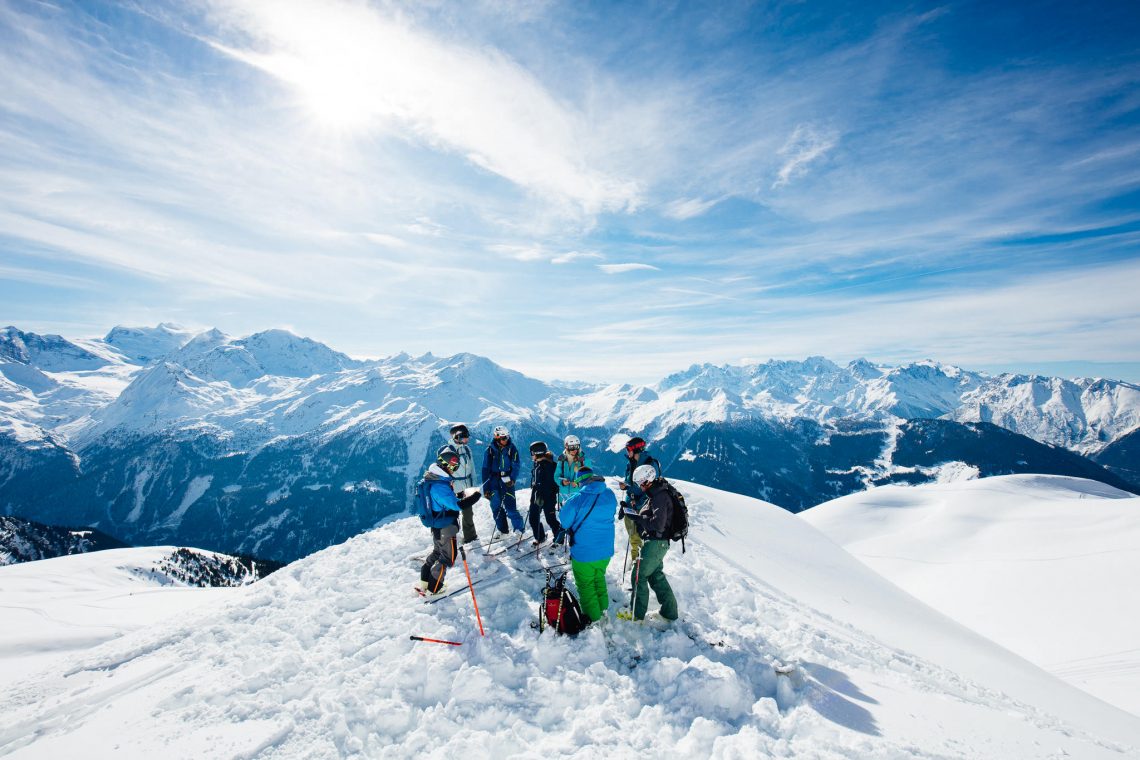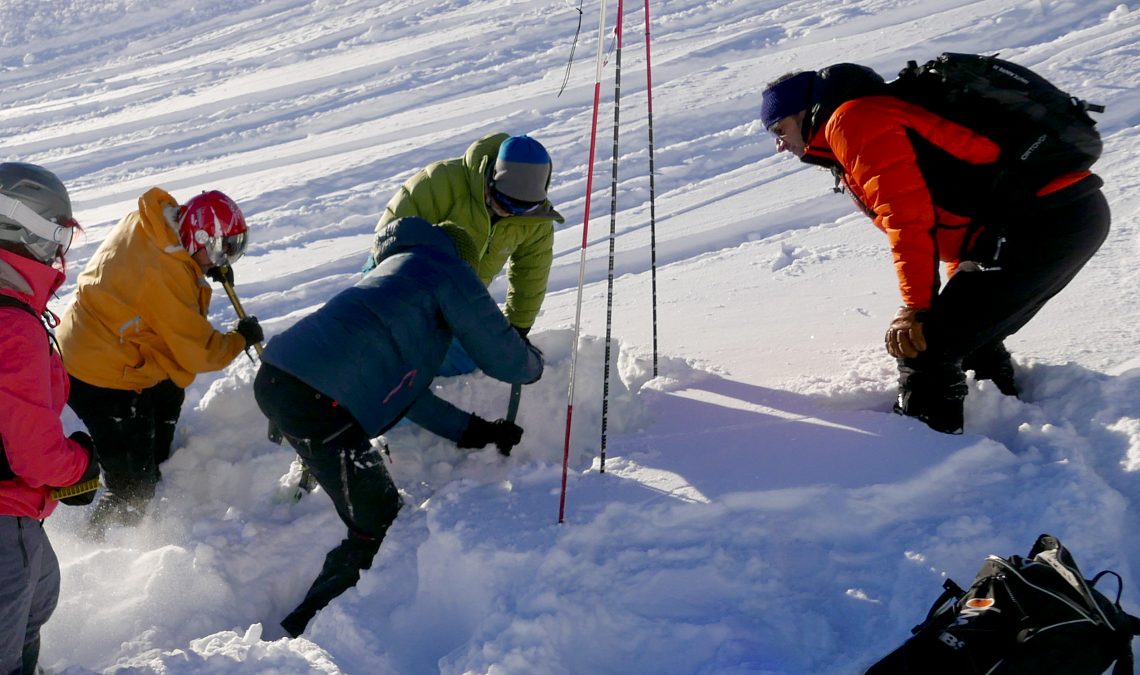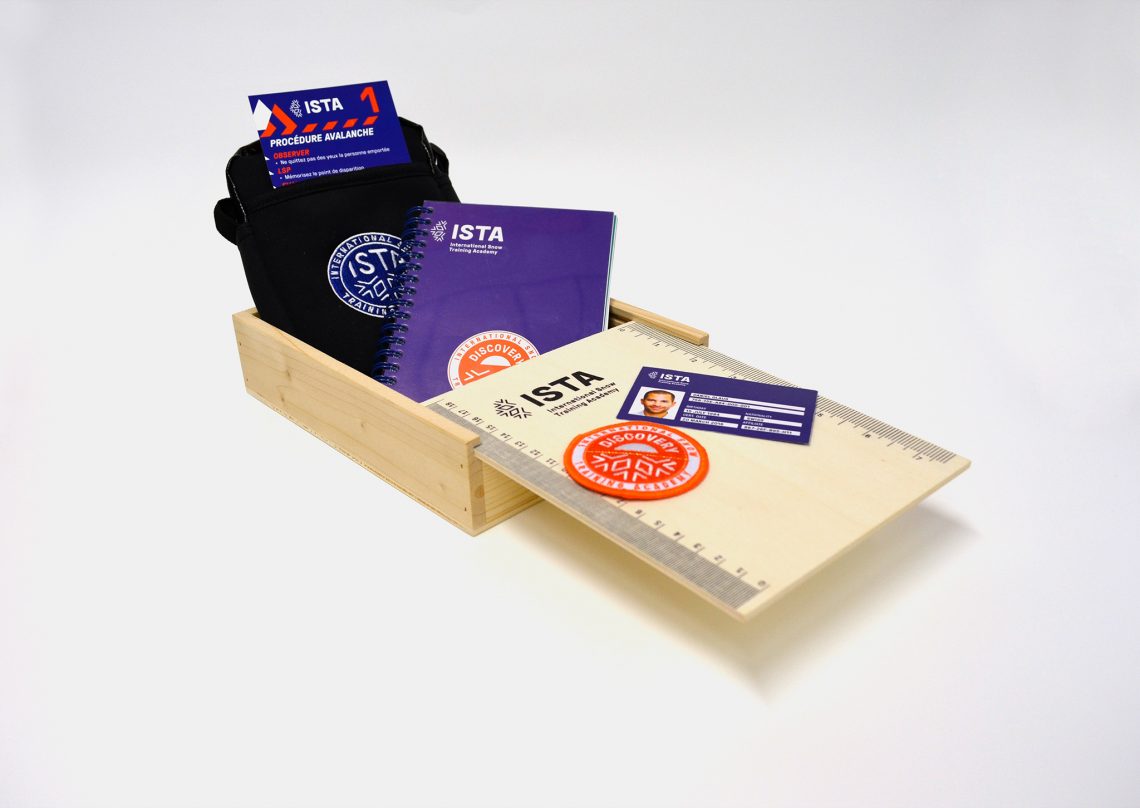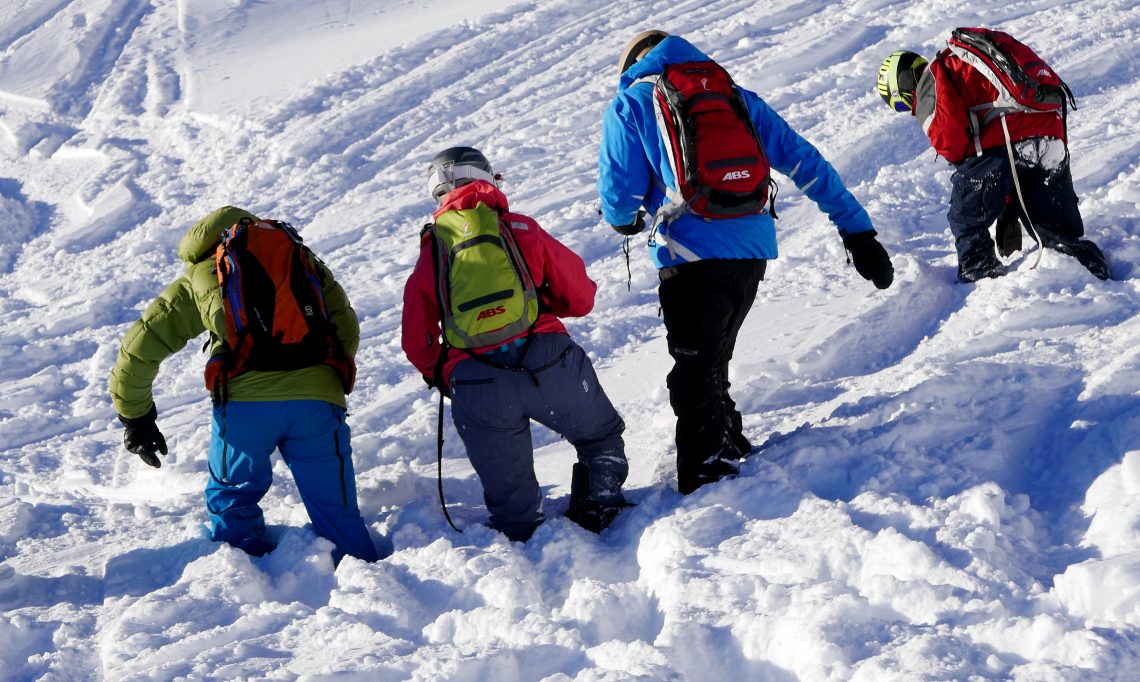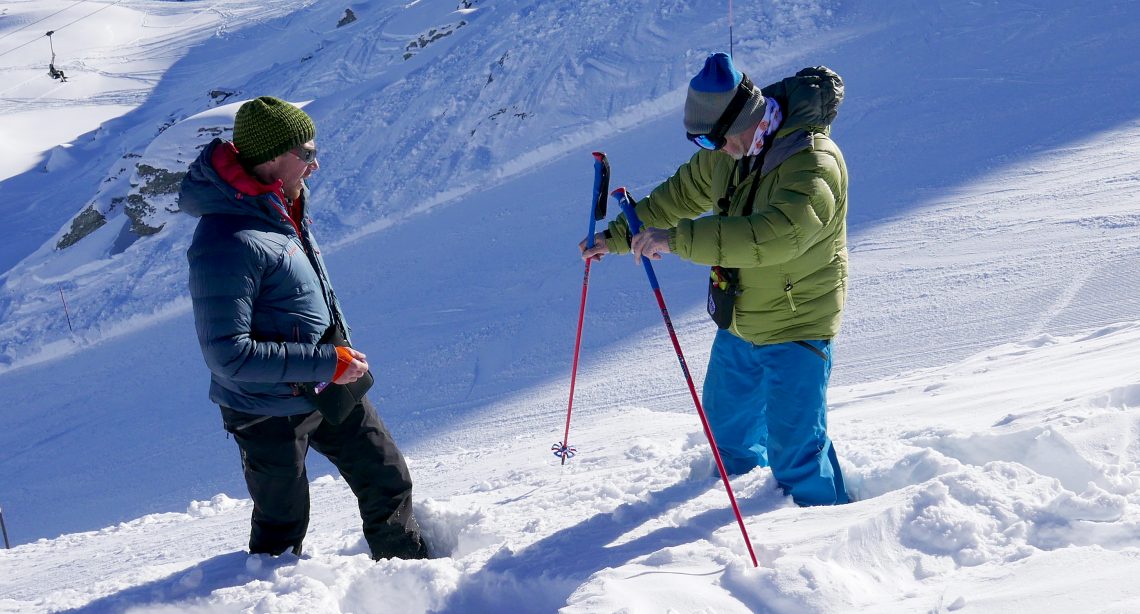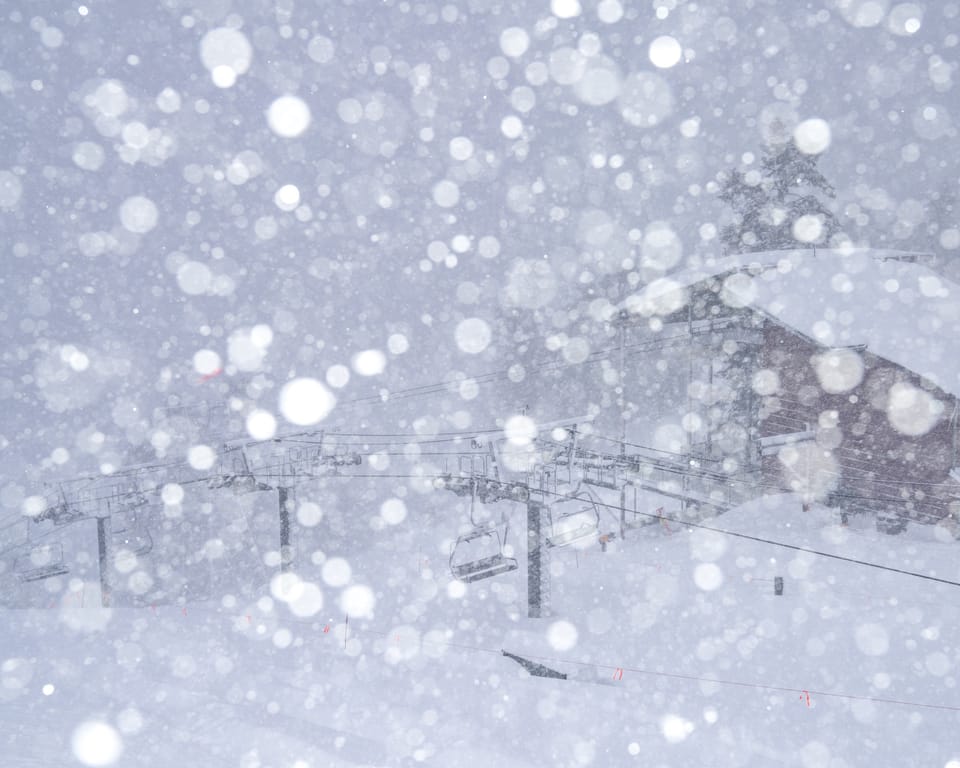STAYING SAFE IN THE BACKCOUNTRY

Heading off-piste? Then you should seriously consider signing up for an ‘ISTA’ avalanche safety
course.
By Alf Alderson
There’s a sprinkling of fresh powder across the peaks and the sun shines bright from a dazzling blue sky as my breath bursts into the sub-zero air like a steam train; I’m in Verbier to take part in the International Snow Training Academy’s ‘Discovery’ avalanche safety course, and I have to say I’m pleasantly surprised to find that it involves a good deal of skiing rather than just tramping around with transceivers and digging in the snow.
The reason I’m doing the course is because 90 per cent of avalanches affecting skiers are triggered by the skiers themselves; in other words, people like me. On average 200 recreational skiers die every year in avalanche incidents, eighty per cent of whom are male, between the ages of 35 – 55.
I’d assumed that the course would focus on using transceiver, probe and shovel in a rescue situation, but it’s avalanche risk prevention rather than what to do after a slide has happened that is the meat and bones of the programme.
With mountain guide Emmanuel Trollet of Les Guides de Verbier and ISTA course founder Dominique Perret, eight of us – a mix of seven Brits and one German, male and female, aged from late 20s to over 60 – are introduced to the basics of travelling safely in avalanche country.
We start off by assessing the competence and ability of our group in off-piste terrain, then go on to such fundamentals as assessing the snowpack for stability and studying the basics of sun, wind and terrain features on snow stability as we ski around the slopes above Verbier.
We learn all manner of safety essentials, from how to measure slope angle using our ski poles to how to dig a snow pit to assess the stability of the snowpack; we even consider the effect we have on the flora and fauna of the areas where we’re skiing.
The course, indeed the International Snow Training Academy, is the brainchild of freerider Dominique Perret, who in 2000 was voted ‘Freeride Skier of the Century’ by his peers. It was set up in 2014 after a spate of avalanche deaths in the Alps and media accusations of irresponsibility amongst skiers riding away from the pistes, with the programme being developed in Lausanne by 40 experts in everything from snow science and mountain rescue to education and communication.
It’s only at day’s end that transceivers, probes and shovels are put into action, with an exercise in which we’re given 15 minutes to locate a hidden transceiver and dig it out (15 minutes being the point at which survival rates for a buried victim drop drastically).
Despite temperatures of minus 10 everyone is sweating, puffing and panting by the time we succeed in our task, and we’re left in no doubt that were this the real thing, and with the addition of panic, confusion and stress, the chances are we wouldn’t have done it in the allotted time. Which merely adds weight to Dom’s comment that: “This is a situation you never, ever want to find yourself in” and underlines the importance of understanding the risks as much as knowing how to use your rescue gear.
It’s been a fun, but at the same time, a serious day in the mountains, in which I’ve learnt a lot, and also skied quite a bit (which I wasn’t expecting). And most importantly I’ve discovered that the best way to survive an avalanche is to learn how to avoid ever getting caught in one in the first place.
ISTA www.ista-education.com/en

